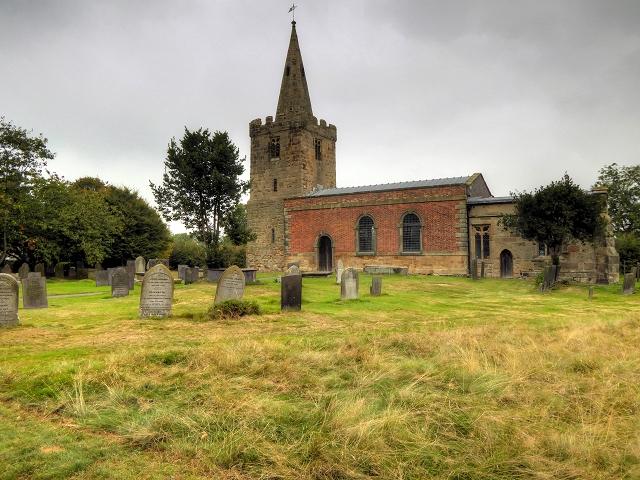St Saviour
Foremark, Derbyshire
St Saviour's was built in 1662 reusing stone from a ruined chapel at nearby Ingleby, and is built in such a convincing style that from the outside only an expert could tell the true date.

A pretty rural church situated on the banks of the River Trent, with a fine, original Norman arch and Maltese Crosses denoting its connection with the Knights Hospitallers.
Twyford, Derbyshire
St Andrew's in the village of Twyford, South Derbyshire, is a Grade I heritage listed building built in the reign of Henry I (1100-1135) on the banks of the River Trent. There has been a river crossing here since Roman Times at least. The name Twyford means 'two fords' and these would have been essential before the present road bridges were built.
The church is situated in the middle of a Conservation Area with beautiful surrounding countryside. It is and has always been greatly loved by the residents who number approximately 130.
There is a fine, original Norman arch, Maltese Crosses in the stonework in the west end and a possible runic stone in the southwest corner of the nave.
There is only one stained glass window situated at the east end. The artist was James Dudley Forsyth (1874-1926), a well known artist with work in Westminster Abbey, the Baltic Exchange and many London and provincial churches. It was fitted in 1911 and was the gift of Sir William Towle who was the blacksmith's son, born in Twyford and rose to eminence on the Midland Railway.
On the South wall of the chancel is a marble monument with a metal plate stating that the vault of the Bristowe family is under the communion rail. It also commemorates Samuel Bristowe and others of the same family. There is, too, a brass plate which commemorates Simon Bristowe who joined Cromwell's Army and killed a Royalist soldier at Tutbury Castle. The soldiers swore to be revenged and when Simon's brother William died in 1645, the records tell us that 'his manservant buried him privately at night in Twyford churchyard, and levelled the ground as the King's army had threatened to come and burn his body'.
In the churchyard are many interesting gravestones, mainly of slate, many with decorative lettering and designs. A table top tomb commemorating a famous surgeon, John Wright, who died in 1850, is situated to the right of the main entrance door to the church. He served 40 years at the then newly opened Derby Hospital.
Foremark, Derbyshire
St Saviour's was built in 1662 reusing stone from a ruined chapel at nearby Ingleby, and is built in such a convincing style that from the outside only an expert could tell the true date.
Repton, Derbyshire
.
Chellaston, Derbyshire
A small attractive stone church, largely Victorian with features dating back to the 1200s.